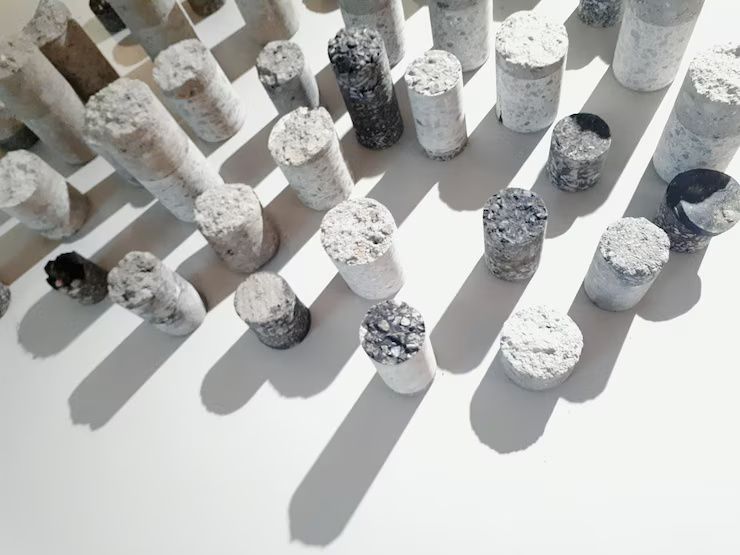Silicon carbide (SiC) bricks are high-performance refractory materials made by combining silicon and carbon at high temperatures. Known for their strength, thermal resistance, and corrosion resistance, these bricks are commonly used in furnaces, kilns, incinerators, and reactors.
They were developed to withstand extremely harsh industrial conditions such as rapid heating, chemical exposure, and abrasive materials. Their purpose is to offer a longer-lasting, more durable solution compared to traditional fireclay or high-alumina bricks.

Why Silicon Carbide Bricks Matter Today
In today’s manufacturing and metallurgy environments, silicon carbide bricks play a critical role for:
-
High-Temperature Resistance: They perform reliably above 1,400°C, ideal for steel, glass, and ceramic industries.
-
Corrosion Resistance: Withstand attack from acids, alkalis, and slags in chemical processing plants.
-
Energy Efficiency: Their high thermal conductivity reduces heat loss in furnaces, improving energy savings.
-
Low Maintenance: Durable structure means less frequent repairs and lower operational downtime.
Industries benefiting most include:
-
Iron and steel
-
Glass manufacturing
-
Waste incineration
-
Non-ferrous metal refining
-
Cement kilns and boilers
These bricks solve the problem of material failure in extreme environments, improving operational stability.
Recent Updates in the Silicon Carbide Brick Industry (2024–2025)
The past year has seen several developments in SiC brick technology and market trends:
-
Sustainable Sourcing: Manufacturers are increasingly using recycled SiC or more eco-friendly binders in production.
-
Nano-SiC Enhancements: Use of nano-structured SiC particles improves brick density and strength.
-
Additive Manufacturing: Some companies now use 3D printing for custom-shaped bricks, improving installation time.
-
Market Growth: According to a 2024 report by MarketsandMarkets, global demand for SiC refractory materials is expected to grow at 5.6% CAGR due to their use in energy-efficient and green technologies.
-
Hybrid Materials: New SiC-alumina hybrid bricks offer improved slag resistance for specific furnace applications.
These trends reflect the industry's focus on better performance, cost efficiency, and environmental sustainability.
Policies and Standards Affecting Silicon Carbide Brick Usage
The production and use of silicon carbide bricks are governed by industrial and environmental regulations:
-
IS 1528 (India): Provides test methods for refractory materials, including SiC bricks.
-
ASTM C113 & C1171 (USA): Standards for mechanical testing and corrosion evaluation of refractories.
-
REACH & RoHS Compliance (EU): Ensures no harmful substances in bricks used in chemical processes.
-
Environmental Norms: Restrictions on dust, emission levels, and safe disposal of worn-out bricks.
-
Occupational Safety: Plants using SiC bricks must ensure safe handling due to their sharp edges and potential dust inhalation risks.
Governments increasingly favor energy-efficient refractory materials, which benefits the adoption of silicon carbide-based products.
Useful Tools, Websites, and Resources
To support planning, purchasing, and testing of SiC bricks, here are some helpful resources:
Tools and Testing Equipment
-
Refractory Testing Kits – For modulus of rupture, porosity, and bulk density.
-
Thermal Shock Resistance Meters – Measures a brick’s ability to handle sudden temperature changes.
-
Chemical Resistance Chambers – Simulates harsh environments to test performance.
Reference Websites and Directories
-
Refractories Worldforum (www.refractories-worldforum.com) – Industry trends and material research.
-
Matmatch (www.matmatch.com) – Compare material properties and global suppliers.
-
Bureau of Indian Standards (www.bis.gov.in) – Official IS codes and guidelines.
Procurement Platforms
-
Indiamart & Alibaba – Listings of verified manufacturers and exporters.
-
Made-in-China.com – Useful for finding OEM suppliers with certifications.
Frequently Asked Questions About Silicon Carbide Bricks
Q1. What are the main types of silicon carbide bricks?
There are nitride-bonded, oxide-bonded, and self-bonded (direct-bonded) types, each suited to different industrial conditions.
Q2. How long do silicon carbide bricks last in a furnace?
Lifespan varies by usage, but typically they last 2–3 times longer than high-alumina bricks under the same thermal stress.
Q3. Are silicon carbide bricks safe to handle?
Yes, but protective gloves and dust masks are recommended during installation due to potential sharp edges and fine dust.
Q4. Can these bricks be recycled?
Yes, worn bricks can sometimes be ground and reused in refractory mixes, depending on contamination level.
Q5. How are silicon carbide bricks installed?
They are usually installed with refractory mortar or anchored systems in high-heat zones. Proper curing and heating cycles are essential.
Final Thoughts
Silicon carbide bricks are an essential solution in industries that demand high heat resistance, chemical durability, and long-term operational stability. As technology evolves, these bricks continue to improve in performance and environmental compliance.
Whether you’re managing a steel plant, a chemical processing unit, or a glass kiln, investing in SiC brick solutions can offer significant long-term savings and process efficiency. Staying informed about recent innovations and legal standards ensures safer and smarter industrial operations.
